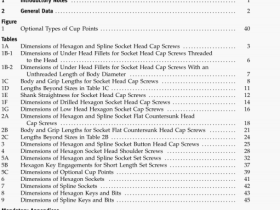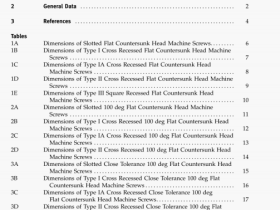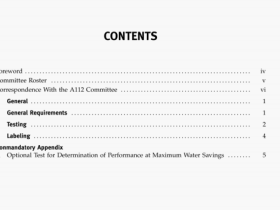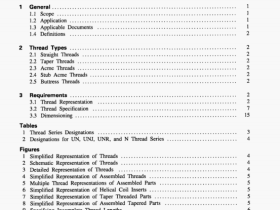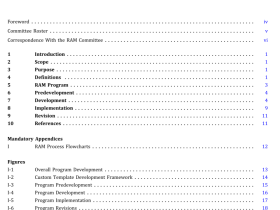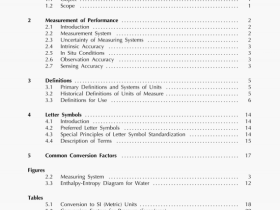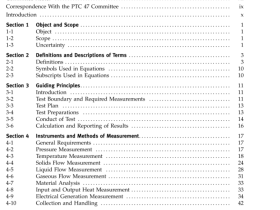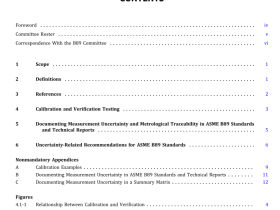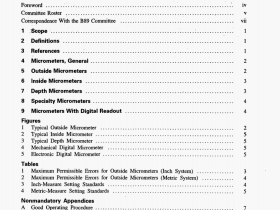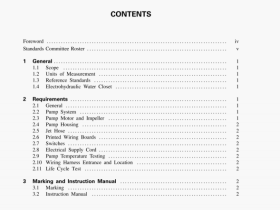ASME B89.1.10M-2001 pdf download

ASME B89.1.10M-2001 pdf download.DIAL INDICATORS (FOR LINEAR MEASUREMENTS).
Bi DEFINITION
An cicetronic indicator is a self-contained measuring instrunwnt intended to perform the same function as a mechanical dial indicator. Displacements of a spindle or lever are detected by suitable electronic means and are displayed on a digital display, which is an integral part of the instrument.
82 GENERAL
The use of electronic indicators and mechanic-al dial indicators arc thc same, so much of this Standard is directly applicable to either style of indicator. Some areas of this Standard, however, contain teimmology and requirements that do not apply to some features and performance characteristics of electronic indicators. This Appendix will attempt to standardize a methodology for dclcumning thc accuracy of electronic indicators to facilitate mutual understanding between manufacturers and consumers,
83 DIMENSIONAL CONSTRAINTS
To ensure interchangeability betsseen Type A dial indicators and electronic indicators in industrial applications. indiidual manufacturers shall indicate, in their catalogs and literature. conformance to appropriate dimensions (see Fig. I) with the symbol AD (American Gage Design).
84 DISPLAYS
The numbers on the display shall have good contrast with the background, and the least-count digit shall agree with the analog reading (if present) within one digit of the least count. If the device loses count (e.g.. due to a low battery condition or too quick of a spindle mo%cment) an appropriate error indication will appear on the display.
B5 UNITS OF MEASURE AND RESOLUTION
Flectronic indicators shall have minimum digital resolutions corresponding to the dial graduation cLasses for dial indicators as given in pars. , or higher resolutions[e.g.. 0.00001 in. (0.0002 mm) or 0.00002 in. (0.0005 mm)]. Analog-style displays or other display symbols shall be considered secondary to the digital display. Analog number markings (if present) shall correspond with pants. 8.2.6 and 82.7. The face of the instrument shall clearly indicate which system of units is currently being displayed.
86 ACCURACY
In assessing the accuracy of an electronic indicator, the following factors should be considered:
to) oerall magnifeation and linearity
(b) accuracy of interpolation between scale elements of the indicator’s encoder
(c) contribution due to the uncertainty of the least digit
(ci) repeatability fe) hysteresis
By nature of digital display systems, assuming the last digit represents a rounded-off value. the accuracy cannot be better than *1/2 the mintmum displayed digit. The uncertainty is a uniform distribution with a width of one digit. The digitization of the data contributes an effective standard deviation of ‘2 the value of the least digit dts ided by /3 to the evaluation of the uncertainty of measurement.
Calibration of electronic indicators should be performed by standards or instruments of known accuracy. The inaccuracies of the standards or instrumentation should preferably be less than 10% of the accuracy requirement, of the indicator under test and should not be greater than 25% of that value.
Electronic indicators should meet the following accuracy requirements.
(b) The calibration should begin at a point within 10% of the at-rest position of the spindle and should end at a point beyond 90% of the range of the instrument. Set the starting point to zero and take at least 10 readings at equally spaced intervals covering the range. Readings
should be taken with the spindle moving in and with the spindle moving out. Results of a typical calibration are shown in Fig. BI.
(c) For electronic indicators with ranges of greater than 0.200 in. (5 mm), a“microcalibration” should also be performed. To evaluate the “microcalibration” of the instrument, start from the original zero position and take 10 additional readings at intervals of 0.005.
